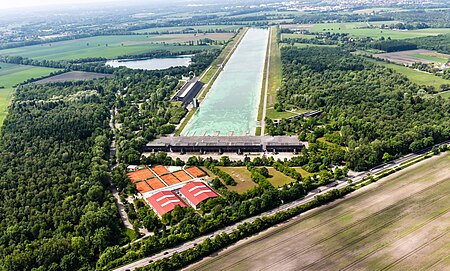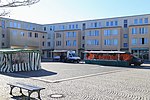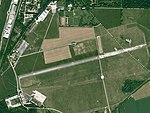Oberschleißheim Regatta Course
Bavaria building and structure stubsGerman sports venue stubsMunich (district)Olympic canoeing venuesOlympic rowing venues ... and 3 more
Sports venues in BavariaSummer Olympic venue stubsVenues of the 1972 Summer Olympics

The Regattastrecke Oberschleißheim is a rowing venue situated in Oberschleißheim near München in Germany. It was built for the rowing and canoeing events of the 1972 Summer Olympics, and has since hosted numerous world rowing events. It is in everyday use by a number of rowing and canoeing clubs and has the official description "Leistungszentrum für Rudern und Kanu" (engl. Performance center for rowing and canoe).
Excerpt from the Wikipedia article Oberschleißheim Regatta Course (License: CC BY-SA 3.0, Authors, Images).Oberschleißheim Regatta Course
Regattaweg, Munich Feldmoching (Feldmoching-Hasenbergl)
Geographical coordinates (GPS) Address Nearby Places Show on map
Geographical coordinates (GPS)
| Latitude | Longitude |
|---|---|
| N 48.242777777778 ° | E 11.515 ° |
Address
1000m Turm
Regattaweg
80995 Munich, Feldmoching (Feldmoching-Hasenbergl)
Bavaria, Germany
Open on Google Maps











